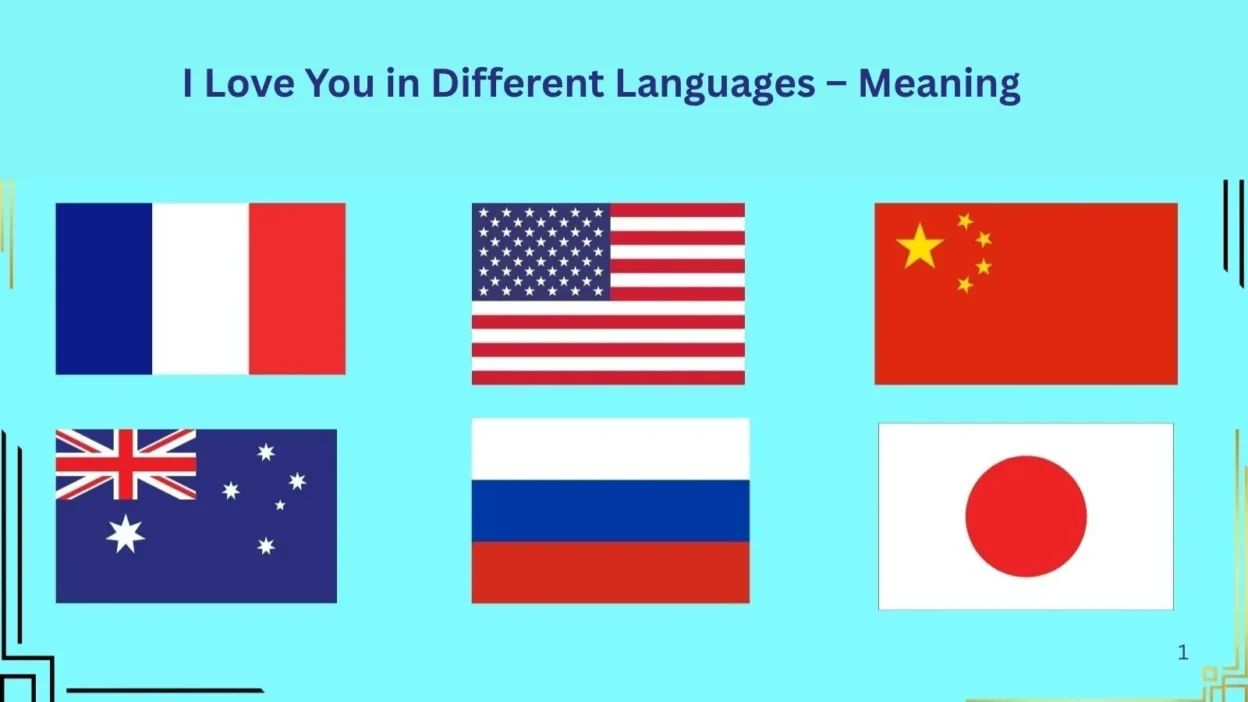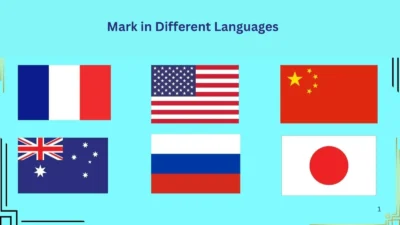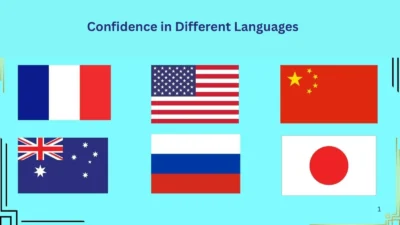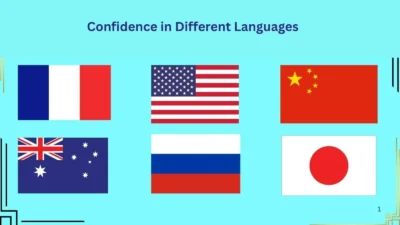When someone searches for “I love you in different languages,” they’re not just looking for translations—they’re on a journey to connect with people across cultures,
express feelings to someone special, or perhaps write a romantic message or a creative letter. Love is universal, but expressing it in someone’s native language makes it more personal and meaningful.
Whether you’re:
- In a cross-cultural relationship,
- Traveling or living abroad,
- Writing a multilingual card or poem,
- Or simply passionate about languages…
This article is your go-to guide. We’ll not only show you how to say I love you in over 50 languages, but also explain the cultural meaning and how to use the phrase appropriately.
How To Say “I Love You” In Different Languages

“I love you” is one of the most powerful and emotionally loaded phrases in the world. It means a deep affection, emotional connection, or romantic feeling towards someone. But depending on the language or culture, it may carry different levels of intensity or intimacy.
For example:
- In English, “I love you” can be used with family, friends, and romantic partners.
- In Japanese, love is often shown through actions, not just words.
- In Spanish or French, romantic declarations tend to be more direct and poetic.
Understanding this helps avoid miscommunication, especially when learning or using a new language.
I Love You in 50+ Languages (With Pronunciation)
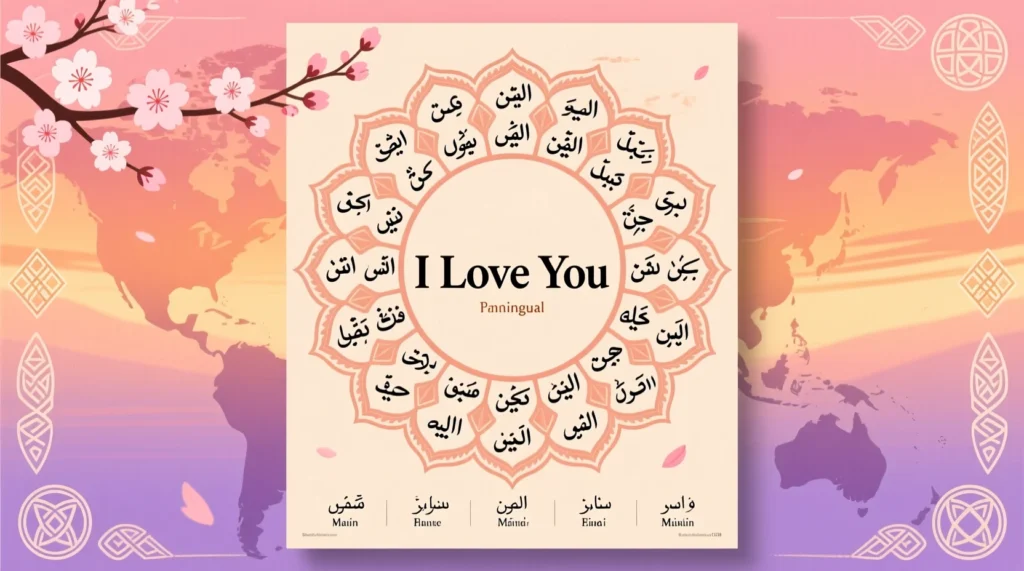
Here’s how to say I love you in a wide range of languages, from common to rare:
| Language | Phrase | Pronunciation (approx.) |
| Arabic | أحبك | Uh-heb-buk |
| Spanish | Te amo | Teh AH-moh |
| French | Je t’aime | Zhuh tem |
| German | Ich liebe dich | Ikh LEE-buh dish |
| Italian | Ti amo | Tee AH-moh |
| Hindi | मैं तुमसे प्यार करता हूँ | Main tumse pyaar karta hoon |
| Urdu | میں تم سے محبت کرتا ہوں | Main tum se mohabbat karta hoon |
| Chinese (Mandarin) | 我爱你 | Wǒ ài nǐ |
| Japanese | 愛してる | Aishiteru |
| Korean | 사랑해 | Sa-rang-hae |
| Russian | Я тебя люблю | Ya te-bya lyu-blyu |
| Portuguese | Eu te amo | Ay-ooh chee AH-mo |
| Turkish | Seni seviyorum | Seh-nee seh-vee-yo-room |
| Greek | Σ’ αγαπώ | S’agapó |
| Filipino | Mahal kita | Ma-hal kee-ta |
| Swahili | Nakupenda | Nah-koo-pen-dah |
| Persian (Farsi) | دوستت دارم | Dooset daram |
| Hebrew | אני אוהב אותך | Ani ohev otach (to a woman) |
| Thai | ฉันรักคุณ | Chan rak khun |
| Bengali | আমি তোমায় ভালোবাসি | Ami tomay bhalobashi |
(Tip: You can create beautiful, personalized messages by choosing your loved one’s language!)
When & How to Use “I Love You” in Conversation

Depending on the culture, I love you might be said:
- Every day (like in Western cultures)
- Rarely but deeply (like in some Asian countries)
- Through non-verbal actions instead of words
Examples of usage:
- Romantic Partner: “Je t’aime, mon amour.” (French – I love you, my love.)
- Long-distance love: “Seni seviyorum. Her zaman seni düşlüyorum.” (Turkish – I love you. I dream of you always.)
- Poetic message: Combine several languages for a creative effect: “Te amo, Ich liebe dich, and 我爱你—all my hearts speak the same.”
Cultural Notes & Tips
- In Germany, people may say “Ich hab’ dich lieb” to family and close friends—it’s less intense than “Ich liebe dich.”
- In Japan, “Aishiteru” is very strong. Instead, many use “Suki da yo” (I like you a lot) in everyday romantic talk.
- In India, open expressions like “Main tumse pyaar karta hoon” are often used in movies more than daily life, especially in traditional families.
Understanding these nuances helps you express love respectfully and sincerely.
Creative Ways to Say “I Love You”

If you want to go beyond the phrase, try these:
- “You are my everything.” — “Tu es tout pour moi.” (French)
- “My heart is yours.” — “Mein Herz gehört dir.” (German)
Conclusion:
Learning to say I love you in different languages isn’t just fun—it’s a way to build deeper relationships, celebrate global culture, and speak directly to the hearts of people you care about. By understanding the language and the culture behind the words, you’ll express your feelings in a more meaningful way.
